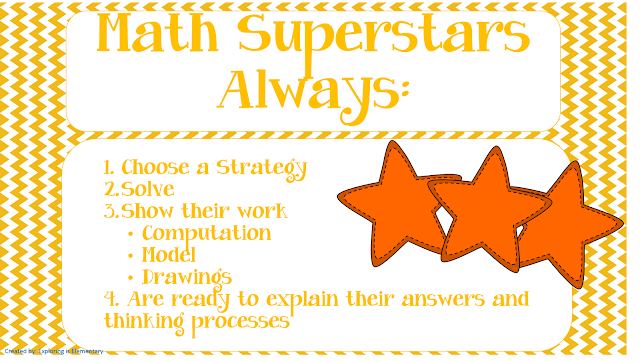The
last two weeks I spent not at the beach, but inside a classroom learning about
how to teach math. Two weeks seems like a long time to learn about math, but in
reality, it doesn’t seem like it was long enough to learn how to really dive
deep into the ins and outs of the “new math.” Of course, the awesome incentives
kept us encouraged throughout the program as well.
I
wanted to show ya’ll some of the things that I learned that I want to
incorporate into my room. Yes, I know that I’m not teaching math this year. The
thing is, I’m going to be helping integrate math into reading and social
studies. Isn’t that what teaching is really about now? Integrating the uses?
Showing how they apply? ;) I think so!
Our
training was divided up into several sections:
- Problem Solving
- iPad Use
- Geometry
- Number Sense
- Pedagogy
Every
Monday, I’ll showcase some things that I have learned in each section. So,
today I want to show off some things from Problem Solving. The professor for
this session was AMAZING! He really kept us pumped up!
The
main thing that I took away from this session (other than some really cool
dice, number lines, etc…) was that for a student to show true math
comprehension, they have to be able to use strategies to find the answer but
really be able to explain their thinking and to take in other people’s ideas.
One
good activity to start off the process was to give each team of kids a puzzle
without the picture. Have them put together their puzzles. Afterwards, have a
class discussion describing each team’s tactic for putting the puzzles back
together! This would show that we all have different ideas on how to get to the
end result.
Once
you get the puzzle activity completed, and children understand that we all have
different ideas, then you can move onto the math tasks. The NCTM suggests that
we do math tasks at least weekly. This math tasks are designed to get your
brain thinking, that’s for sure! Teach the task procedures of choosing a
strategy, solving, showing work, and thinking through how to explain the
answer. Kind of like a mental check sheet for the kids. One process that we
went through was this:
- We completed a math task by our self, going through the process.
- Then we compared work with a partner.
- Then with a group we used chart paper to figure out four different ways to answer the problems.
- Finally we did a gallery walk to see about the other ways groups had found.
We
also talked about math anxiety and how we, as teachers, can help kids kick the
anxiety.
So,
let me ask you! What is one thing that you want to change when teaching problem
solving in your classroom? How can you integrate this process in your room?
Coming
soon to my store is this monthly packet called Math in Writing. It is designed
to have students work through math problems, but have a writing extension based
on their problem. You can get your sample here!



No comments:
Post a Comment